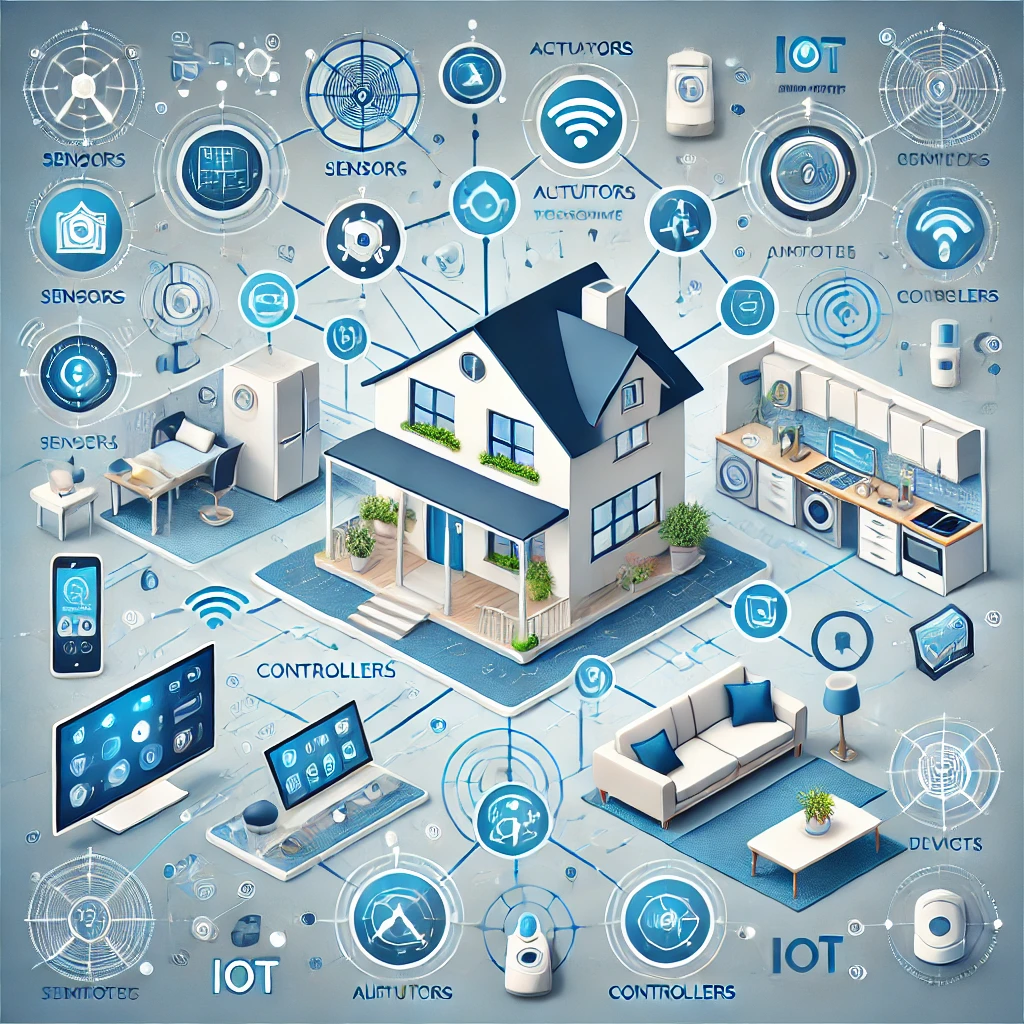In recent years, the concept of the smart home has transitioned from a futuristic vision to a tangible reality. With the advent of the Internet of Things (IoT), our homes are becoming more interconnected, intelligent, and responsive to our needs. This transformation is not just about convenience; it’s about redefining the way we live, enhancing efficiency, security, and comfort in our daily lives.
A. Understanding Smart Homes and IoT
1. What Is a Smart Home?
A smart home is a residence equipped with devices that can be controlled remotely via the internet. These devices, ranging from thermostats to security cameras, are interconnected through a central system, allowing homeowners to monitor and manage various aspects of their home environment with ease.
2. The Role of IoT in Smart Homes
The Internet of Things (IoT) refers to the network of physical objects embedded with sensors, software, and other technologies to connect and exchange data with other devices over the internet. In the context of smart homes, IoT enables devices to communicate with each other, providing a seamless and integrated living experience.
B. Key Components of a Smart Home
A. Smart Lighting Systems
Smart lighting allows homeowners to control the brightness and color of lights remotely. These systems can be programmed to adjust based on time of day or occupancy, enhancing energy efficiency and ambiance.
B. Intelligent Climate Control
Smart thermostats learn user preferences and adjust heating or cooling accordingly. They can be controlled remotely, ensuring optimal comfort while reducing energy consumption.
C. Advanced Security Solutions
Smart security systems include features like motion detectors, surveillance cameras, and smart locks. These devices provide real-time alerts and can be monitored remotely, offering peace of mind to homeowners.
D. Automated Appliances
From refrigerators that notify you when you’re low on groceries to ovens that can be preheated remotely, smart appliances are revolutionizing kitchen convenience.
E. Voice-Activated Assistants
Devices like Amazon Alexa or Google Assistant allow users to control various smart home devices using voice commands, simplifying daily tasks.
C. Benefits of Smart Home Technology
A. Enhanced Convenience
Smart homes automate routine tasks, allowing homeowners to focus on more important activities. For instance, lights can turn on automatically when someone enters a room, or coffee machines can start brewing at a set time.
B. Improved Energy Efficiency
By monitoring and adjusting energy usage, smart homes can significantly reduce utility bills. For example, smart thermostats optimize heating and cooling schedules based on occupancy patterns.
C. Increased Security
Real-time monitoring and alerts ensure that homeowners are immediately informed of any unusual activity, enhancing overall safety.
D. Remote Accessibility
Whether you’re at work or on vacation, smart home systems allow you to monitor and control your home environment from anywhere in the world.
D. Challenges and Considerations
A. Privacy Concerns
With increased connectivity comes the risk of data breaches. It’s essential to ensure that smart home devices are secure and that personal data is protected.
B. Compatibility Issues
Not all smart devices are compatible with each other. Homeowners should ensure that their devices can communicate effectively to avoid integration issues.
C. Initial Investment
Setting up a comprehensive smart home system can be costly. However, the long-term benefits, such as energy savings and increased property value, often outweigh the initial expenses.
E. The Future of Smart Homes
As technology continues to evolve, smart homes are expected to become even more intuitive and integrated. Advancements in artificial intelligence and machine learning will enable homes to anticipate user needs, further enhancing the living experience.
Conclusion
The integration of IoT in our homes is not just a trend; it’s a significant shift in how we interact with our living spaces. By embracing smart home technology, we open the door to a future where our homes are more responsive, efficient, and attuned to our lifestyles.














